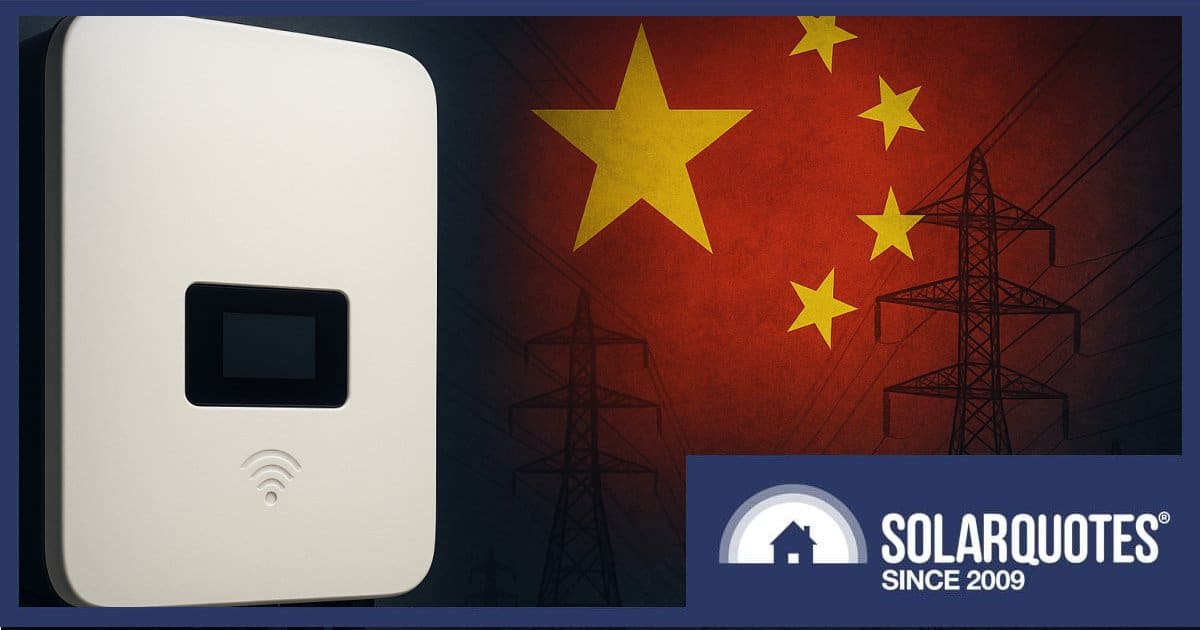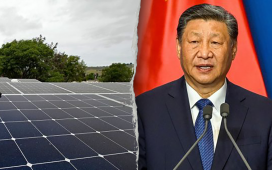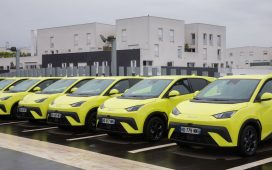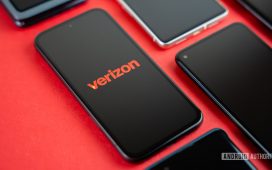

SolarQuotes has been receiving enquiries about a Reuters story published last week alleging the discovery of undocumented communication devices found in Chinese solar inverters and batteries in the USA. Is it something for Australian home solar owners to be worried about?
It’s been interesting watching this story repeated around the web with increasingly frantic headlines, such as:
“Revealed: China has secretly installed kill switches in solar panels sold to the West – which could see Beijing plunge its enemies into darkness in the event of WW3”.
That’s quite a headline — almost long enough to be a story on its own and an interesting variation on the original, which was:
“Rogue communication devices found in Chinese solar power inverters”
What’s This All About?
The Reuters report claims communication devices not listed in product documents have been found in some Chinese solar inverters and batteries by U.S experts.
“The rogue components provide additional, undocumented communication channels that could allow firewalls to be circumvented remotely, with potentially catastrophic consequences, the two people said,” states the report.
In such a scenario, solar inverters could potentially be switched off remotely or have their settings changed. It’s not a major threat if this happens to a small number of units, but electricity grids are finely tuned beasts and such an action en masse could destabilise power grids, cause damage to energy infrastructure, and trigger widespread blackouts.
But there’s some really important information missing from the report:
- Who these “experts” that allegedly found the devices are.
- How many inverters/batteries were found to have these alleged rogue communication devices.
- Whether this was gear only associated with utility-scale applications.
- The manufacturers involved.
The U.S. government hasn’t publicly acknowledged the alleged discoveries. So, there’s nothing concrete on this, the sources are anonymous, and the claims vague.
This doesn’t mean it hasn’t happened, but there’s also a bigger picture. Let’s say these allegations came from government sources. There are all sorts of reasons why US energy officials might be casting aspersions around Chinese tech (and renewables in particular) right now aside from the ongoing adversarial nature of the relationship between the two countries.
It’s no secret US President Donald Trump, who has an interesting take on truth generally, wants more fossil fuels and more local manufacturing. He’ll do whatever it takes to make that happen regardless of the fallout or who is impacted along the way.
In terms of manufacturing, it’s not only foreign companies he’s targeting, but local firms manufacturing overseas too — and not necessarily just in China. An example of the latter is a recent conversation he had with Apple CEO Tim Cook.
“I had a little problem with Tim Cook yesterday,” Trump said. “I said to him, ‘my friend, I treated you very good. You’re coming here with $500 billion, but now I hear you’re building all over India.’ I don’t want you building in India.”
Nice little company you’ve got there Tim, be a real shame if something happened to it.
Home Solar Security
The Reuters report is somewhat of a nothing-burger as it currently stands; but something good to come from it is Australian solar power system owners getting interested in/concerned about (or unfortunately, panicky in some cases) cybersecurity related issues.
Here are a couple of related articles from the SolarQuotes blog worth taking a look at:
While state-sponsored bad actors and companies kowtowing to governments are a genuine risk to solar security, non-government backed criminal organisations and the bored kids down the road who have a bit of tech nous are a threat as well. It’s not only “rogue communications devices” of concern, but just plain old security flaws resulting from human error; and systems not being patched with the fixes — that’s not confined to solar gear from China.
Is your internet-connected inverter’s/battery’s firmware up-to-date? It’s worth checking your device’s interface, or with your installer as they often have access as well for troubleshooting purposes.











